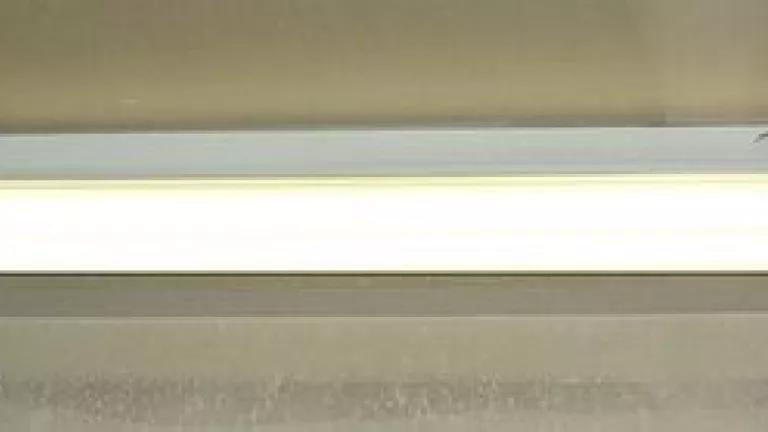
On the very last day of 2014, the Department of Energy (DOE) released new energy efficiency standards for linear fluorescent lights that will lower the electric bills of virtually every office building, school, and hospital across the country by $15 billion through 2030. The new DOE standards are a big deal as there are billions of these tubular lights in place and they are often on for 12 or more hours a day.
These lighting standards culminate a very successful energy-saving year by DOE, which finalized minimum energy efficiency standards for 10 product categories ranging from commercial refrigeration equipment to furnace fans to external power supplies (the ubiquitous little black box chargers needed to power our laptop computers and cell phones). According to DOE, these 10 standards will eliminate 435 million metric tons of carbon dioxide emissions from power plants, the largest source of climate change pollution in the United States and save America's businesses and families $78 billion in electricity bills through 2030.
And this lighting standard for what is known in the industry as "General Service Fluorescent Lamps" was worth waiting for as it represents one of the greatest energy (and financial) savings of all those set in 2014.
Linear Fluorescents Are Everywhere and Will Soon Be Even More Efficient
Next time you are in your conference room, a grocery store or visiting your child's school, look up and you will see 2 to 4 foot long fluorescent tubes illuminating the room. In fact, there are just under 2.5 billion linear fluorescent lamps installed in the United States and on average, each commercial building has around 300 of them. Fluorescent lighting accounts for 60 to 70 percent of the total electricity consumed by lighting in commercial and industrial buildings in the United States.
Under the new DOE standards that go in to effect in 2018, new lamps will need to be 4 percent more efficient than current ones and 23 percent more efficient than those sold before 2012, the date when DOE's last standard for these common lighting tubes went into effect. The standards will ensure that every new replacement lamp sold in the future is an efficient one. The new lamps are a simple drop-in replacement and will give off the same amount of light and work just as well as the current, less efficient ones.
Missed Opportunity for Reflector Lamps
As part of DOE's final lighting rule, the agency chose not to issue new rules for incandescent reflector lamps (IRLs), the bulbs that go into recessed cans and flood lights. While the potential savings were much smaller than those from linear fluorescent lamps, we believe this was a missed opportunity. And we encourage DOE to revisit this category in the near future as these lamps represent the least efficient bulbs in our homes and significant, cost-effective savings are readily achievable.
Photo by Chetvorno under Creative Commons licensing
